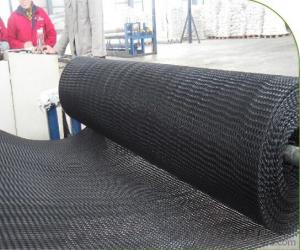I have always been intrigued by the technical creativity that goes into making materials that serve more than one purpose. Among the materials that has come to my attention is the ‘non-woven geotextile drainage fabric’. To me, it is not just about a product but an embodiment of our modern innovative spirit.
The Crux of Innovation
Non-woven geotextile drainage fabric refers to synthetic polymer based and needle punched or thermally bonded fabrics made for draining and filtering while maintaining soil stability. It is a material rather than a mere fabric acting as a solution to different types of geotechnical challenges. Imagine a cloth that can stand its ground against nature’s fury yet delicate enough for livelihood infrastructural facilities! This is what this innovation means.
Versatility in Action
The versatility of this textile is what sets it apart from others. It finds application in anything from civil engineering projects to environmental protection activities. In other words, it quietly reinforces roads and provides stable bases for retaining walls or even helps drain water from landfills. Thus, sometimes behind-the-scenes workers make the most significant contributions.
Science behind the Fabric
The science behind non-woven geotextile drainage fabric can be regarded as fascinating as its applications. Typically, high tenacity polyester or polypropylene fibers are used which are then bonded using modern technology. Consequently, they become impervious to many environmental factors whilst being strong and long-lived. Such material endures time and elements.
Environmental Impact and Sustainability
In today’s world where sustainability matters the non-woven geotextile drainage fabric plays an essential role. Creating material that works versus creating material that functions while saving our planet? The eco-friendly element of such kind of material reduces maintenance requirements hence enhances its lifespan once used in building projects.
Installation and Maintenance: A Personal Touch
Installing the non-woven geotextile drainage fabric is easy. It can be handled without strain on anyone. Constructors and engineers tend to prefer it as it is light weight. The process’s simplicity speeds up construction activities while at the same time lowering the cost of labor involved in carrying them out. Maintenance routines are hardly needed. Consequently, this cloth does not need much attention or care thus no more than a project like this could last indefinitely with virtually everything in place.
Case Studies: Real-World Applications
The non-woven geotextile drainage fabric case studies give you an opportunity to look at its influence on reality. This material has been used in building roads and stabilizing slopes among others. Not only is it a theoretical solution but also a real one that has been tested for years now.
What the Future Holds for Geotextile Fabrics
In the future, non-woven geotextile drainage fabric will become increasingly important in engineering and environmental projects. With developments in technology and material science, this cloth could be even more effective and adaptable. This field has boundless potential for innovation and it is fascinating to consider what might lie ahead.
A Personal Reflection on the Journey of Fabric
To me, non-woven geotextile drainage fabric is not merely a stuff but represents human creativity and effort to improve their quality of life. Each time I see a construction site or a well-maintained road, I am reminded of how much this material contributes to human existence. It shows that sometimes the smallest things can make the biggest difference.
To sum up, non-woven geotextile drainage fabric is not just an ordinary textile; but one that forms part of engineering or environmental conversation. Its uses are many, its influence great, and its future promising. As we continue to push boundaries in our thinking through innovative ways, this textile shall no doubt have a significant contribution towards bettering our world.







